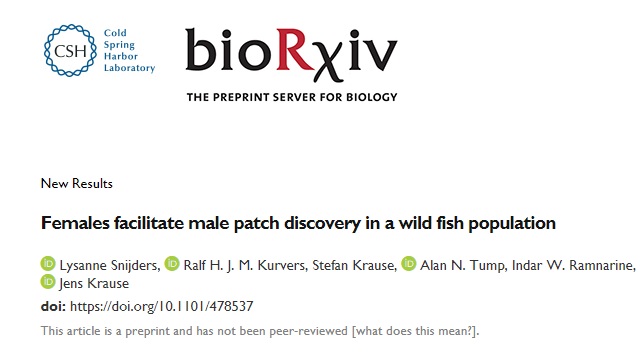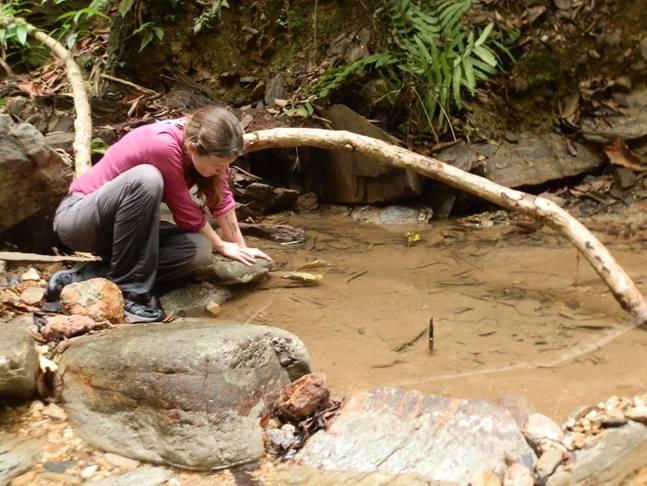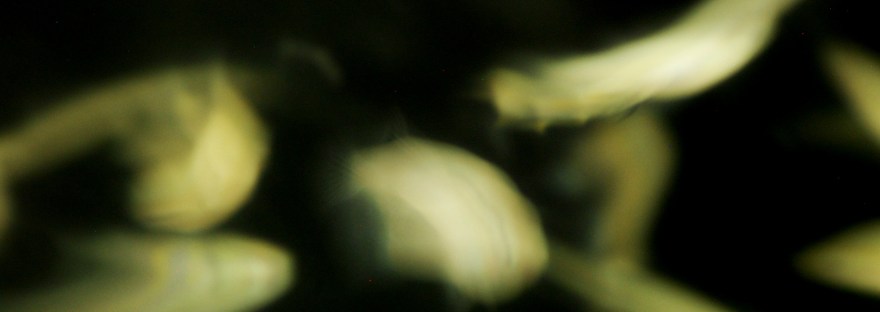After my good experience with the first preprint publication, I recently uploaded my second preprint on the BioRxiv server. I am really excited to share these cool new findings, especially since this study almost did not happen.

Fieldwork is always full of surprises, including flash floods (2018) and cars being stolen (2016). The year of this study (2017), we got stuck on Curacao because our airline was grounded (due to airplane safety concerns, we found out later). Curacao is a great island to spend some time, but it just lacked our favourite little fish: guppies. Luckily, we were able to get new flights and make it to Trinidad a couple of days later.
I love working with guppies, because they allow us to answer some very interesting questions about social living. Guppies live in rainforest streams and in the dry season they often end up in separate pools. These little fish thus naturally experience a variety of physical environments (pools) and social environments (the other fish in the pool). We take advantage of this natural system by trans-locating individual fish to different pools with different social compositions. Most animals would try to go back to their original environment, but for guppies experiencing new physical and social surroundings is just part of their ecology. That we can experimentally control their (social) environment is important, because it allows us to go beyond correlation and ask questions about causality, e.g. how does social composition influence individual foraging success?
To answer this question, we introduced individually marked wild guppies in single sex (male or female) or 50:50 sex compositions, to different pools and studied individuals’ social behavior and their ability to locate novel (experimentally introduced) food patches.

Male guppies found fewer novel food patches in the absence of female guppies, while female patch discovery did not differ between single-sex or mixed compositions. We argue that these results were driven by sex-dependent mechanisms of social association: males reduced sociality when females were absent, while less social individuals found fewer patches. Females were, however, similarly social with or without males. Finally, males, but not females, preferred to join females over males at food patches.
Our study’s take-home message: for a more thorough understanding of social evolution, it is important to consider how individual (e.g. sex) and (sub)population-level traits (e.g. sex composition) interact in shaping the adaptive value of social living in the wild.
Maybe also: don’t fly with Insel Air.
Reference
Snijders L, Kurvers R.H.J.M, Krause S., Tump A.N., Ramnarine I.W., Krause J. (2018) Females facilitate male patch discovery in a wild fish population. BioRxiv.

